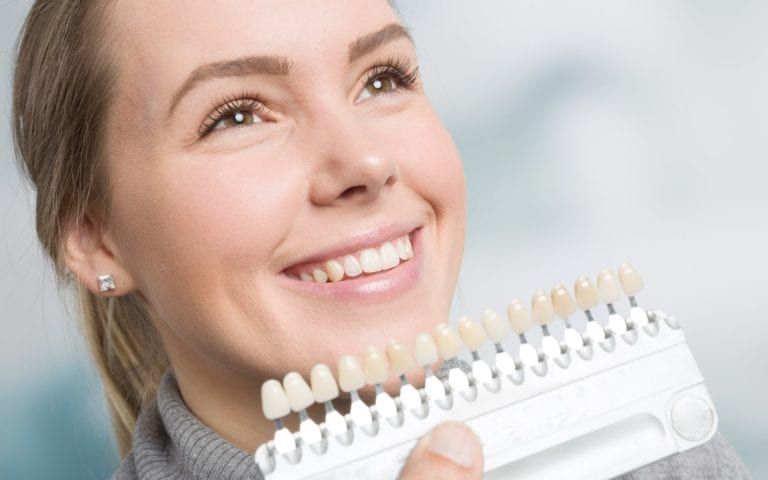Dentists have wonderful tools to restore your smile, and one of the most technical and artistic aspects of dentistry involves matching restorations to the shade of your teeth. Restoring your smile takes an artistic eye and a technical one, and it takes years of medical training to learn how to properly match the tones of your teeth to the restorations you need to maintain your healthy smile. In any dental office, you’ll find that we have various tools and tricks up our sleeve to make sure that your dental treatment is as accurate, professional, and satisfactory as to make you look and feel your best.
The Artistry of Matching Your Tooth Color
Even the healthiest teeth aren’t pure white – that’s because our teeth contain many of the genetic components that our parents, our grandparents, and our ancestors before us have had, meaning the natural shade of your teeth will contain variances of color. Some people’s teeth will contain a more glistening white or translucent color, while others will have a more light yellow tone. Pure, white teeth are considered to be a component of the marketing industry because even teeth whitening treatments do not offer the pure, glistening smiles that you’d see on billboards and magazines.
For dentists, aesthetics involves creating more natural results that suit your complexion, and the art of shade matching involves various techniques to be able to meet those requirements and give you a smile you deserve. Shades represent multiple elements and are often not truly white, but a combination of gray, red, and yellow along with the white shade. When searching for the right shade, dentists often work to look for these elements:
- Hue: Hue refers to the color of the tooth, and when measuring the hue, dentists often have to judge the color based on what the undertones of the shade contain, such as more red tones or more yellow tones beneath the white.
- Value: Value is all about how dark or light the shade is, and measuring value comes with taking into account how bright or dull the shade is compared to other shades.
- Chroma: Chroma, also referred to as saturation, refers to the depth of the hue, and in contrast with light, it is all about the intensity in which color is perceived.
How Dentists Determine Your Tooth Shade
For your dentist to determine your natural shade, the value of the tooth is measured first, and once that value is measured, hue and chroma are measured. During this process, your dentist will most likely have you wear a gray bib to control color aspects from clothing items and other surrounding objects. The gray bib allows our eyes to adjust more susceptible to see the natural color, and through 5 to 7-second intervals, allows us to see the finer details of your tooth shade by giving the rod cells within our eyes rest.
If you’re ready to get your dental restoration started, reach out to your dental provider and schedule your next visit so you can learn about the process, ensure that perfect match, and get the teeth, you’ve always wanted.




